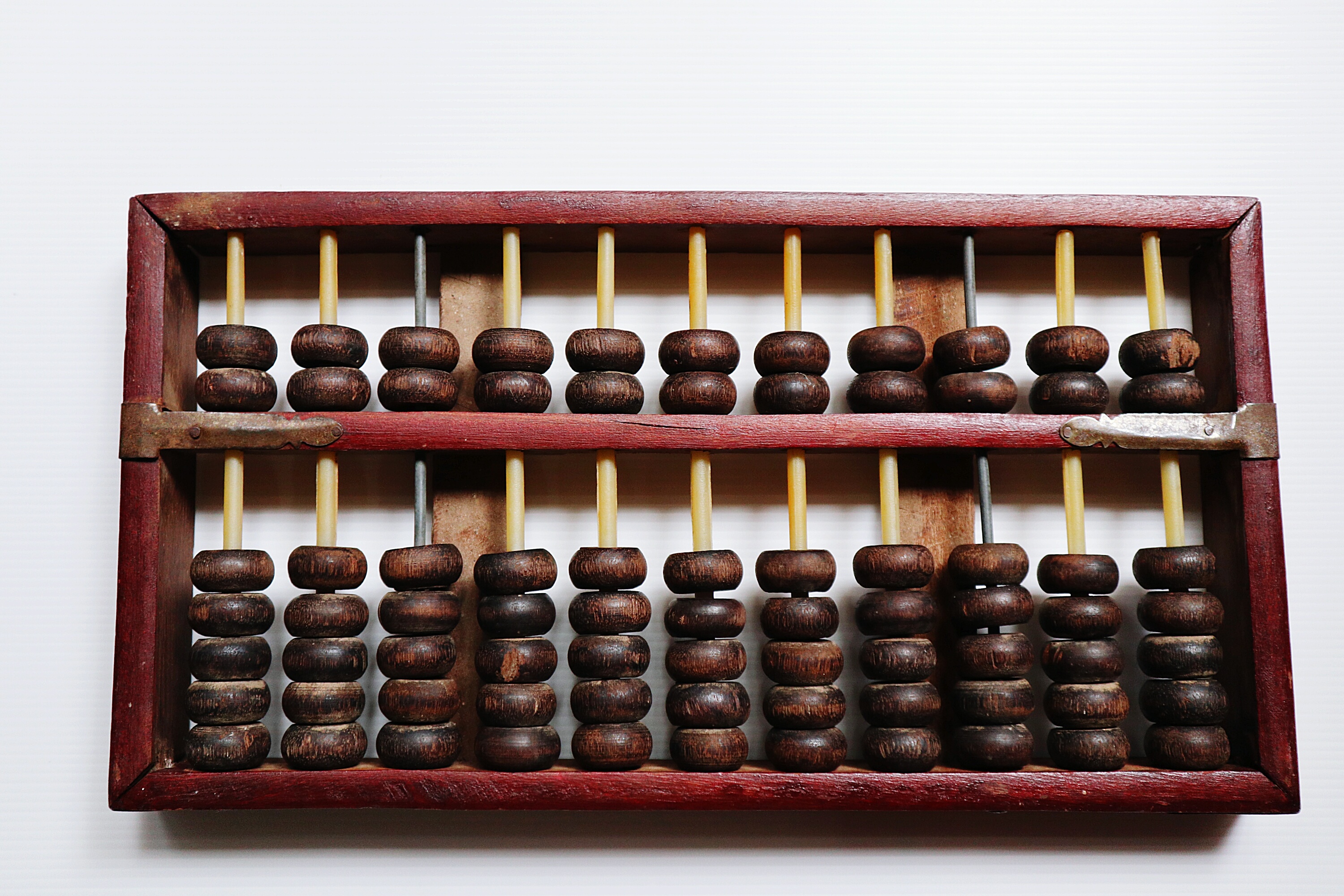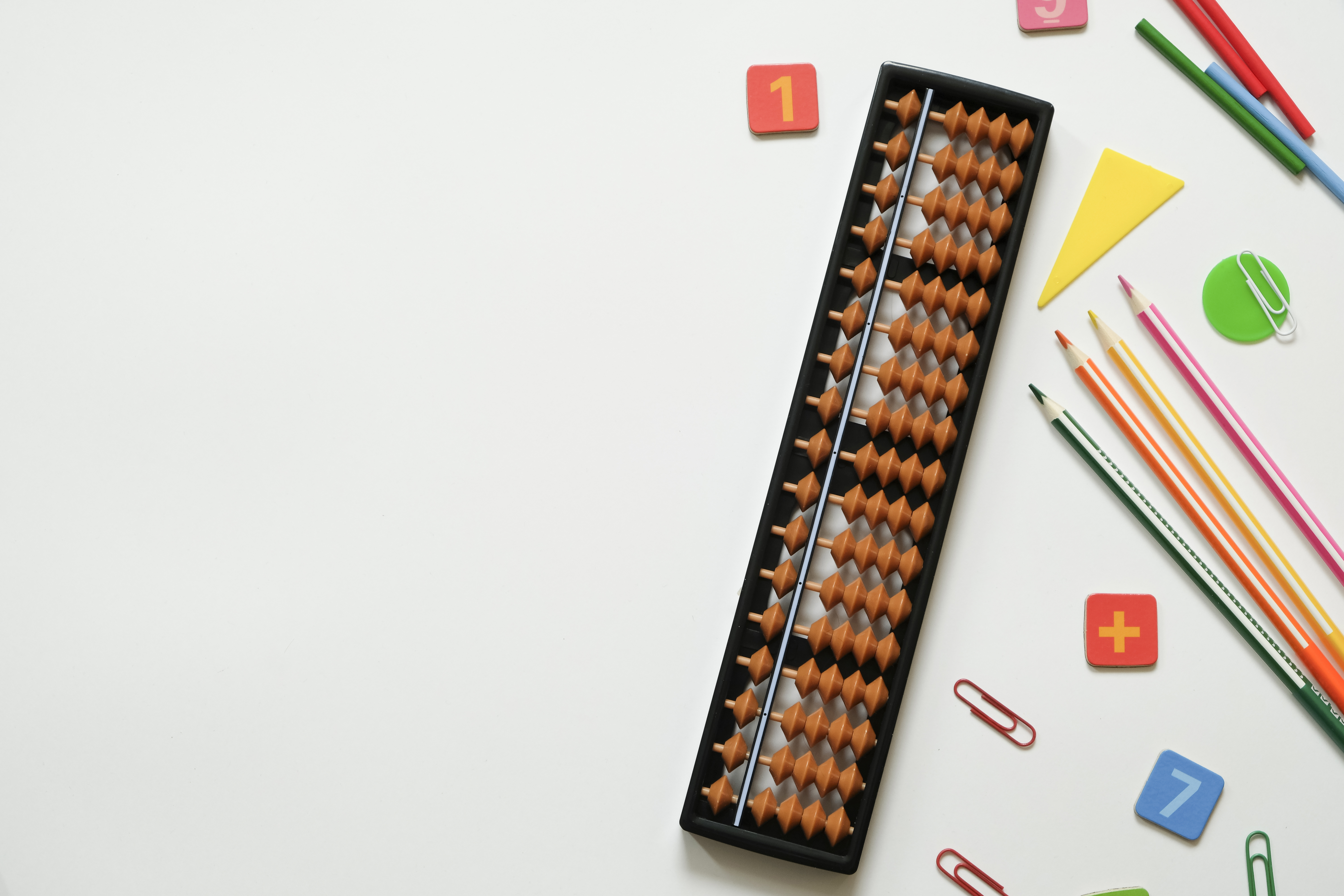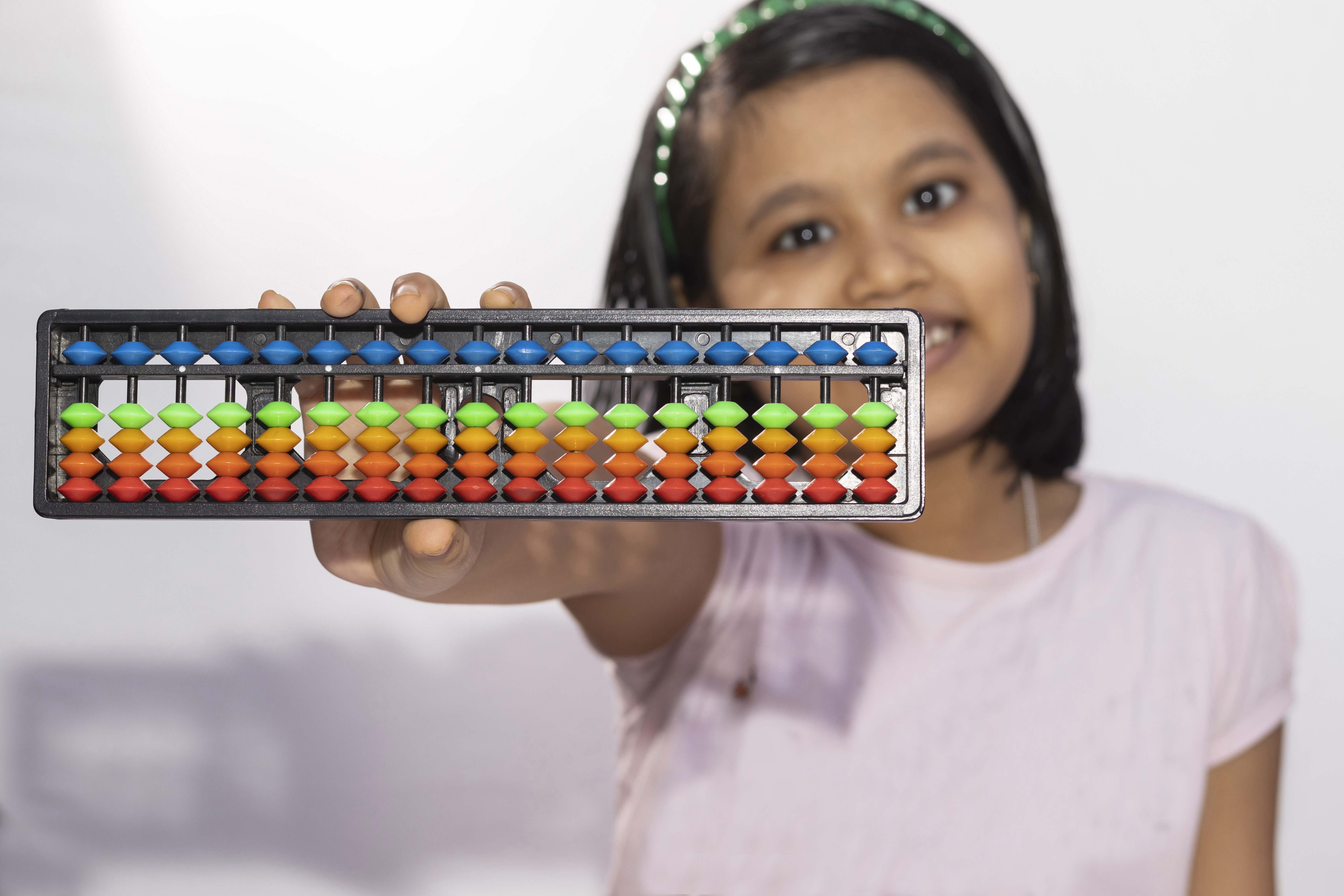Before the invention of calculators and computers, people in Asia used special tools to do math. Abacus, a simple device with a frame and beads that slide on wires is one such popular tool. No one knows exactly when the abacus was invented. But it has been used since ancient times. Even though abacus had multiple versions, its most well-known and widely used designs were developed by the Japanese and Chinese.
Chinese Abacus (Suanpan)
The Chinese abacus, also known as the Suanpan (calculating tray), has been around since the 2nd century BC. The invent of Chinese abacus is tied to the Roman merchants. The Roman merchants introduced counting boards to the Chinese during trade. Over time, the Chinese modified its design to suit their needs resulting in the formtaion the Suanpan we currently recognize.
Suanpan has a rectangular wooden frame with a horizontal bar dividing it into two sections:
- The upper section, called “Heaven,” has two beads per column
- The lower section, called “Earth,” has five beads per column
Each vertical rod represents a decimal place, and the beads are used to perform calculations. The beads above the bar is assigned the value of five units, while the beads below a value one. This allows users to count up to 16 different numbers (0-15).


To perform calculations like addition or subtraction the beads are moved in specific ways based on mathematical rules. The final numbers are determined by the beads that are pressed against the crossbar.
The Suanpan is still used today, especially for teaching math and improving mental calculation skills!
Japanese Abacus(Soroban Abacus)
The Japanese abacus called Soroban is a modified version of the ancient Chinese Suanpan. Unlike the Chinese abacus, the Soroban has a much simpler design, making calculations easier.
It has:
- One bead above the bar
- Four beads below the bar
Each rod can represent numbers from 0 to 9, making it a decimal-based system. The beads are usually made from metal, wood, or plastic, and the frame is made of wood.
How It Works:
- Counting is done by moving the beads up and down the rods using thumb and index finger
- The addition is done by pushing a bead towards the counting bar
- Subtraction is done by moving a bead away from the counting bar

One key feature that sets Soroban apart from Suanpan is the dot placed on every third rod. This dot helps to separate place values (like thousands, millions, etc.), making it easier to read numbers. It also helps with decimal point calculations, something the Chinese abacus doesn’t usually have.
This simpler layout helped Japanese Soroban to become more efficient. Hence, it is still used today for teaching math and improving mental calculation skills!
Though numerous variations were used throughout the world, such as in Greece, Russia, and America, the Soroban abacus is the most often used type today. Even though the designs varied, the objective of using an abacus remained the same. When people learned that utilizing the device not only boosted calculating speed but also improved human brain power to do mental math, it became extremely popular.
Which Abacus Is Better: Chinese or Japanese?
Both the Chinese Suanpan and the Japanese Soroban are great tools for doing math. But just like everything else, it also comes with some differences. Let’s compare them to find out the better alternative!
Ease of Learning
- The Suanpan can handle more numbers (0 to 15 per rod). But, beacuse of this, one will have to go through significnat amount of practice to learn it.
- The Soroban follows the 0 to 9 system, just like our regular numbers. Hence one can usen it easily.
Speed & Accuracy
- The Soroban is designed for speed and accuracy. This makes it a better choice for mental math and quick calculations.
- The Suanpan is more flexible. But, one will have to take extra steps to do some calculations.


Modern-Day Use
- The Soroban is still widely used in Japan and other countries for teaching math and mental calculations.
- The Suanpan is less common today, but some people, especially in China, still use it.
So, Which One Should You Choose?
If you want something easy to learn and fast to use, the Japanese Soroban is the better choice. In addition to its practical application, students who learned to use the Soroban abacus reaped other benefits. It is still popular because it delivers useful benefits such as increased focus, confidence, visualization, and memory by acquiring a perfect grasp of the number from the root up. But if you like learning traditional methods and want a more versatile tool, the Chinese Suanpan is also a great option.